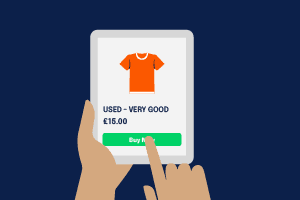
Staying ahead of the game in the ecommerce industry is vital and requires a deep understanding of consumer preferences and adopting strategies that drive customer loyalty. As we delve into our comprehensive guide, Exploring the nuances in ecommerce – How to leverage personalization to drive customer loyalty one key finding emerges as a game-changer – the rising trend of recommerce or the second-hand market.
Recommerce: A Rising Trend
Recommerce, once an old trend, has reemerged as a booming industry in recent years. The concept revolves around reselling old and unwanted items on third-party platforms like eBay and Depop, attracting brands like PrettyLittleThing and IKEA to explore its potential. Consumers are turning to resale platforms to not only find great deals but also to sell their unwanted items, contributing to the circular economy. As an online retailer, embracing the recommerce trend can open new avenues for both acquisition and retention strategies.
Our research reveals a staggering 52% of consumers participate in recommerce, ranking only behind donations in parting with old or unneeded items. This trend’s rise is intriguing as it highlights that product quality isn’t the primary consideration for shoppers, both in-store and online. Instead, more people are turning to resale platforms to buy and sell, emphasizing the growing importance of sustainability among younger generations who show concern for the environmental impact of their retail habits.
Embracing the Sustainable Shift
The boom of recommerce is a testament to the increasing importance of sustainability in the retail industry. Customers are not only attracted to the cost-saving potential of second-hand items but also motivated by their contribution to environmental conservation. Highlighting the sustainability aspect of your commerce strategy can create a positive brand image and resonate with environmentally conscious consumers. As the numbers demonstrate, recommerce is a rapidly growing trend, with only 11.2% of consumers returning items to sellers and 21.6% opting to dispose of them. To capitalize on this, it’s essential to incorporate second-hand and unwanted items into your strategy. However, doing so successfully requires careful consideration of your customers’ delivery needs and the optimal selling methods on specific third-party platforms.
Embrace Recommerce with Tailored Delivery Solutions
As you dive into the recommerce trend, consider the delivery needs of your customers. Seamless and reliable delivery experiences will play a vital role in boosting customer satisfaction and loyalty. By leveraging innovative shipping solutions you can streamline your shipping processes and ensure a smooth post-purchase experience.
Customize Your Selling Approach
Understand the requirements of each platform and tailor your selling strategies accordingly. Clear and transparent communication about the condition of the items and shipping options will instill confidence in potential buyers, ultimately contributing to successful transactions.
Discover New Opportunities
The recommerce trend has presented online merchants with exciting opportunities for growth and diversification. Embrace this trend and explore the vast potential it holds for your business. By offering a curated selection of second-hand items and ensuring a seamless delivery experience you can captivate a broader audience and build lasting customer relationships. As recommerce continues to shape the retail landscape, businesses must meet changing consumer preferences – we invite you to download the complete guide to discover more about strategies for ensuring customer loyalty, and by staying ahead of the curve and tapping into the sustainable shift in retail habits, you can position your brand as an industry leader and gain a competitive edge.
Second-hand buying platforms offer an excellent opportunity to reach a wider audience. By exploring partnerships with reputable platforms and incorporating them into your customer journey, you can attract a diverse set of consumers and expand your market reach. The beauty of recommerce lies not only in its potential for acquisition but also in its impact on customer retention. The lifecycle of recommerce can “re-open” even after the initial purchase. When customers decide to resell their previously purchased items, they remain connected to the ecommerce ecosystem. By nurturing customer relationships throughout this process, you create a sense of loyalty and trust, encouraging them to return to your online store for future purchases.
The rise of recommerce is reshaping the way we approach ecommerce. It’s no longer just about selling brand-new items; instead, it’s about sustainability, meeting changing consumer demands, and exploring new avenues for growth. Embrace the trend with confidence, and discover the full potential of recommerce to take your business to new heights.
Download our comprehensive guide to dive deeper into this booming industry here.
